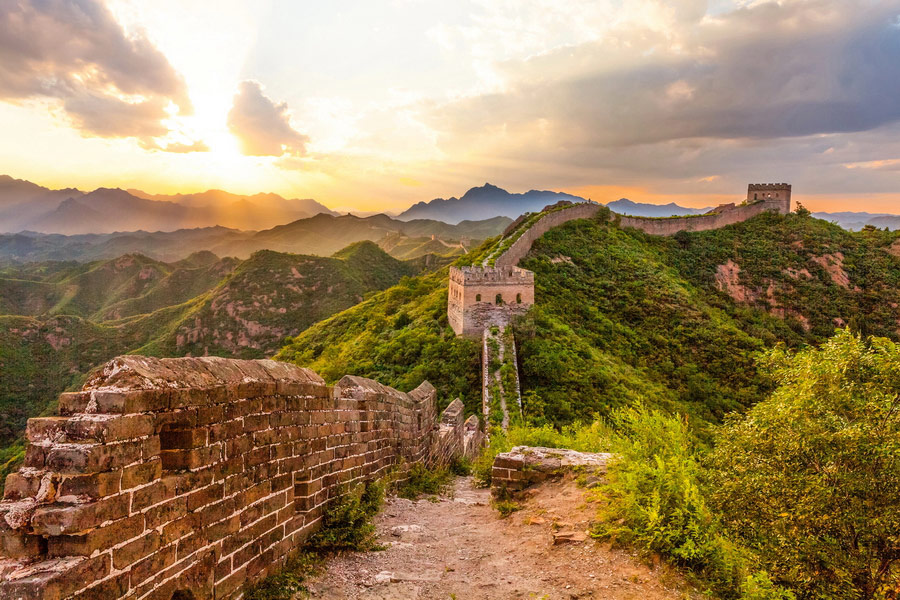
- 1. How is the Great Wall protected by law and policy?
- 2. How is the Great Wall managed across China?
- 3. What’s threatening the Great Wall today?
- 4. How is the Great Wall monitored and protected today?
- 5. How is the Great Wall Being restored?
- 6. How can I help preserve and restore the Wall?
- 7. Surprising facts about the Great Wall
The Great Wall of China ranks among the most remarkable architectural achievements of humankind and was inscribed on the UNESCO World Heritage List in 1987. Its preservation and restoration are a top priority for the Chinese government. The structure’s age, along with natural factors, contributes significantly to its deterioration, so efforts focus on restoring lost sections and preserving the integrity of damaged areas. To ensure the long-term protection of this unique monument, China is implementing a comprehensive set of measures, including the enactment of specialised laws and the application of advanced technologies.
How is the Great Wall Protected by Law and Policy?
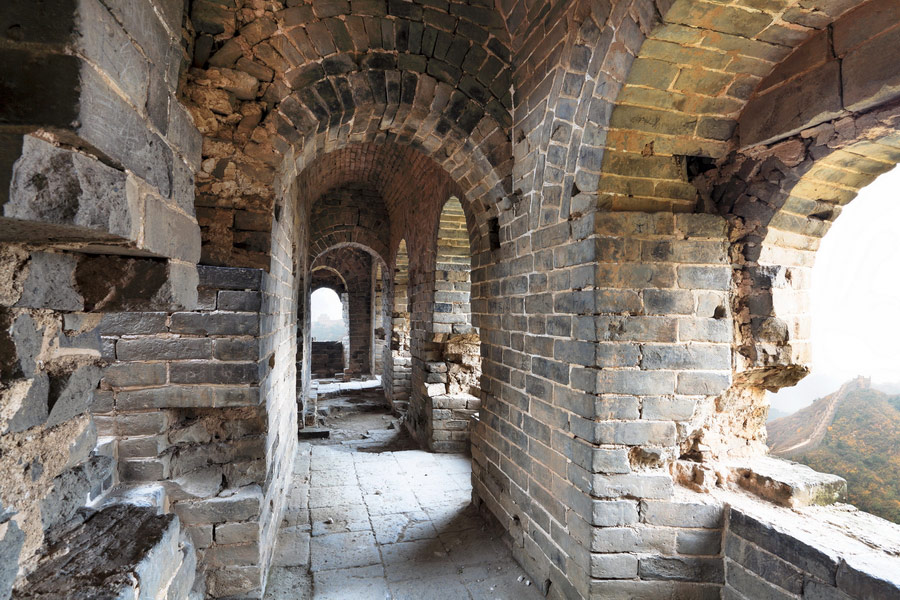
The protection of the Great Wall of China is governed by the Law of the People's Republic of China on the Protection of Cultural Relics, adopted in 1982. This law recognises the wall as a national treasure, and any activity that could damage its integrity is strictly prohibited.
In 2006, the State Council of the PRC launched the Great Wall Protection Overall Plan, a framework aimed at monitoring, preventing damage, and coordinating preservation efforts across regions. After 13 years, the pl an was released in 2019, and a new national program was launched to run through 2035.
This key document:
- defines the principles of protection (preservation of authenticity, minimal intervention, scientific approach);
- identifies responsible authorities at all levels;
- sets requirements for restoration and monitoring;
- introduces mandatory classification of section conditions;
- and provides for the creation of interdepartmental coordination mechanisms.
Since 2020, a comprehensive registration and monitoring system has been implemented, the Defence System Spatial Database and an Image and 3D Database of the Great Wall of the Ming Dynasty. Each section of the wall was assigned an individual identification code. Detailed records are kept on the exact location, construction materials, preservation status, and maintenance needs of each segment. These records are regularly updated and serve as a foundation for restoration and conservation planning.
Protecting the Wall: Rules and Penalties
China enforces strict penalties for damaging the Great Wall of China. Offenders may face serious consequences, which include heavy fines and imprisonment. According to the Criminal Code of the People’s Republic of China, deliberate destruction of any part of the Wall is punishable by imprisonment for three to ten years, or even longer in cases of severe damage to the Wall.
Administrative fines can reach up to 50,000 CNY/RMB (approximately $6,970; £5,120; €5,945) for individuals and 500,000 CNY/RMB (approximately $69,700; £51,200; €59,450) for companies engaged in illegal activity within protected areas. In addition to financial penalties, offenders must pay compensation for damages, and their tools and equipment may be confiscated.
Special attention is given to vandalism, especially:
- Removing bricks and collecting rammed earth from the Great Wall for souvenirs or personal construction and gardening is prohibited. This includes taking away bricks, earth, plant crops, and stones.
- Graffiti and littering on the Great Wall are prohibited.
- Taking inscriptions or sculptures from the Great Wall for sale on the black market is strictly forbidden.
- Riding any type of vehicle crossing the Great Wall is forbidden.
Tourists who deface the Wall or damage its masonry may face steep fines and possible deportation. Local officials are also held accountable – failure to protect cultural heritage may result in dismissal or criminal prosecution.
Modern technologies such as drones and a public surveillance system are used to monitor compliance, and citizens are encouraged to report violations.
How is the Great Wall Managed Across China?
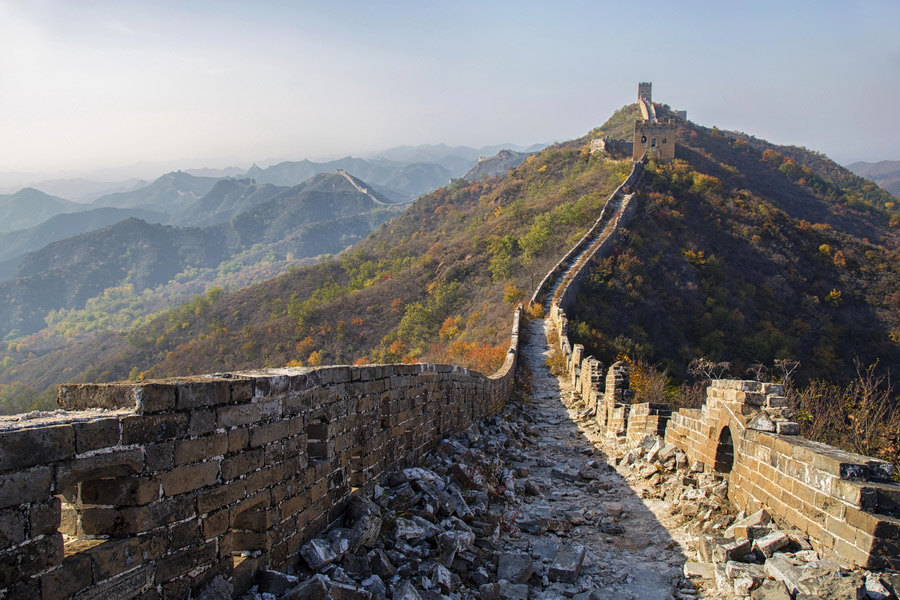
Effective management of the Great Wall of China requires close coordination between different levels of government. In practice, this is achieved through the following mechanisms:
- Each province through which the wall passes must establish a dedicated body to oversee its condition. These units develop conservation projects, conduct expert assessments, and receive government subsidies for restoration work.
- The State Council, in cooperation with the central Ministry of Culture, provincial departments, and local authorities, forms interdepartmental commissions to implement the national protection plan.
- Interregional meetings are held regularly to exchange experience, assess the condition of various sites, and coordinate funding efforts.
What’s Threatening the Great Wall Today?
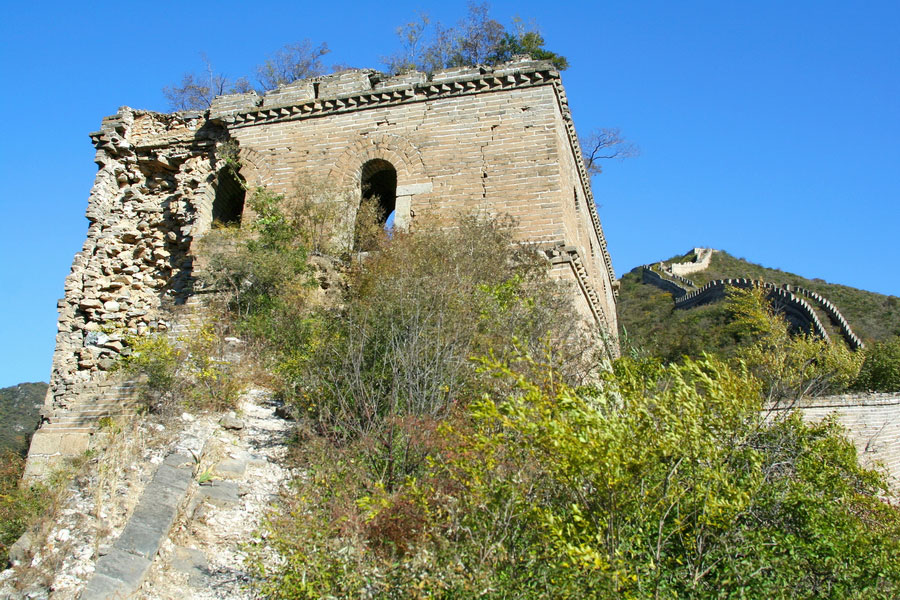
Despite large-scale conservation efforts, the Great Wall of China continues to face a range of threats – both natural and human-made.
Natural erosion and geological instability
Rain, wind, and sudden temperature changes gradually wear down the building materials, especially in the oldest sections. In mountainous areas, landslides and earthquakes pose an added risk, sometimes leading to the collapse of entire segments. Plant roots are another danger, as they can break through the masonry from within and accelerate deterioration.
Economic activity and industrial intervention
In some remote regions, illegal dismantling of the wall still occurs – bricks and stones are taken for private construction. Nearby mining, road building, and other industrial activity also disturb the surrounding environment and increase the risk of structural damage.
Tourist pressure and vandalism
Hundreds of thousands of visitors each year contribute to wear and tear on steps, paths, and brickwork. Vandalism is still common in popular areas, where tourists carve names or messages into the wall despite posted bans and fines.
Restoration errors
In the early 2010s, concrete was used on several sections of the wall, particularly in Liaoning and Hebei. This blocked natural airflow in the ancient masonry and caused accelerated decay. The backlash led to stricter standards for restoration methods and materials.
How is the Great Wall Monitored and Protected Today?

Before beginning any restoration work, specialists conduct a detailed inspection of the Great Wall’s condition. The goal of this monitoring is not only to develop an effective restoration plan but also to detect risks of structural failure – especially in remote, mountainous, or earthquake-prone areas.
To achieve this, a wide range of modern technologies is used:
- Drones – provide rapid aerial imaging of the site.
- LiDAR scanners (Light Detection and Ranging) – remote sensing systems that use laser pulses to produce high-precision 3D models, enabling detection of tiny cracks, structural shifts, and misalignments in the masonry.
- Ground-penetrating radar (georadars) – used to detect internal voids, unstable soil, and underground cavities.
- Infrared thermography – a non-invasive technique that detects temperature variations in structures, helping to identify potential weaknesses and ensure long-term stability.
- Four-legged robots – check the structure of the Wall.
- Satellite monitoring – tracks soil movement, erosion, and the impact of natural disasters
Monitoring is carried out by both Chinese research institutions – such as the Chinese Institute of Cultural Heritage – and international experts. Regional observation centres operate in Beijing, Shaanxi, and Gansu, with some areas receiving real-time data. For instance, in Yushuan County (Hebei), satellite monitoring in 2022 detected soil displacement that could have led to the collapse of a section of the wall. Thanks to early detection, serious damage was successfully prevented.
How is the Great Wall Being Restored?
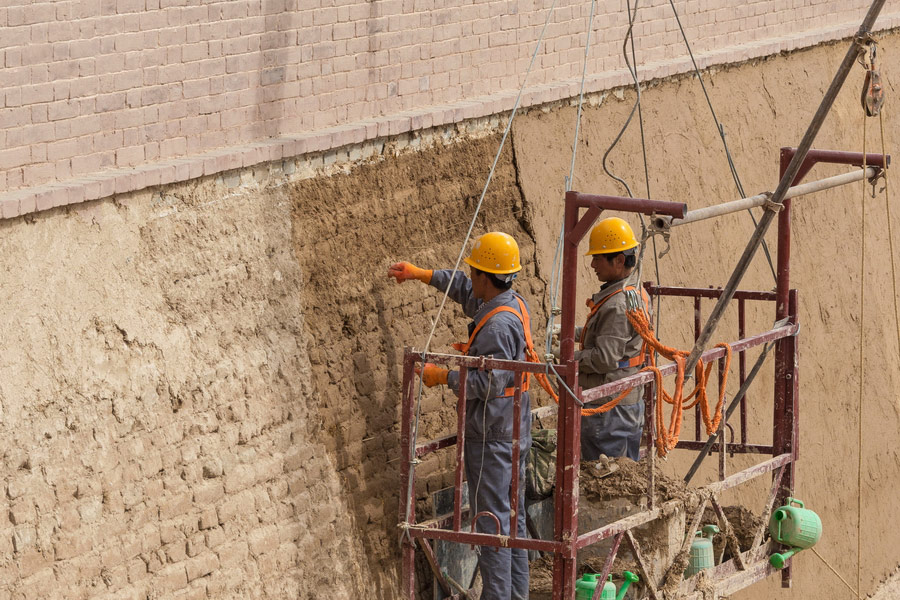
Restoration of the Great Wall is carried out by hand, without the use of heavy machinery to avoid damaging the ancient masonry. Materials used in the process are chosen to closely match the originals: bricks made from local clay, authentic lime mortar, and natural stone from nearby quarries. This helps slow deterioration and maintain the historical authenticity of the Wall’s appearance.
The combination of manual craftsmanship and modern technology, including the application of biological conservation methods, forms the foundation of a sustainable restoration strategy. This approach preserves authenticity, enhances structural durability, and enables long-term monitoring of the Wall’s condition.
Using 3D Printing to Restore Elements
Modern methods of restoring the Great Wall of China also include 3D printing technologies. By digitally scanning surviving sections or using archival materials, specialists recreate identical copies of missing fragments of the Wall. These lost elements are produced on 3D printers, which makes it possible to create highly accurate replicas and minimises the risk of damage during installation. This approach speeds up restoration work while also ensuring greater care for the historical authenticity of the structure.
Actions implemented to preserve and restore the Great Wall: How can I be part of it?
Preserving the Great Wall of China requires not only government efforts but also the participation of the general public. In recent years, programs have been launched that allow everyone to contribute to safeguarding this remarkable monument. One of the most notable initiatives is the “Love China, Restore the Great Wall” program. It invites individuals, companies, and organisations to financially support the restoration of specific sections. Donors can see which bricks or fragments have been renewed thanks to their contributions and feel directly involved in preserving cultural heritage. Over the years, the program has attracted thousands of participants and earned international recognition.
The China Foundation for the Protection of Cultural Heritage (CFCHC) also regularly organises crowdfunding campaigns and online fundraising efforts to help restore vulnerable parts of the wall, especially in remote areas. Its transparent approach, including detailed reports on each project, allows donors to see the outcomes and stay engaged in protecting this World Heritage Site.
To join the programme, you can make a donation and help raise awareness about the challenges of restoring the Great Wall of China. Every contribution, whether financial or by spreading the word, helps ensure this historic monument is preserved for future generations.
Donate to the:
- Love China, Restore the Great Wall: The Badaling and Mutianyu sections
- China Foundation for Cultural Heritage Conservation (CFCHC)
Volunteer with the locals
In many sections of the Great Wall of China, local communities are actively involved in restoration programs. Their efforts help protect the monument and pass on traditional skills and cultural heritage to future generations.
You too can become part of the team working to keep the Great Wall of China alive! Volunteering alongside local residents is not only a way to help safeguard this extraordinary historic landmark but also an inspiring personal experience. You’ll take part in restoring one of China’s greatest symbols with your own hands, learn traditional crafts, share your own skills, and gain deeper insight into the culture and daily life of the people for whom the Wall is an integral part of their world.
Surprising Facts About the Great Wall
Living armour
Researchers believe that certain sections of the Wall have been preserved thanks to a natural biological coating – a thin protective layer of cyanobacteria – along with moss, lichen, and other organisms that grow on the surface of compacted soil and masonry. However, this natural shield is most effective in arid regions such as Gansu and Ningxia. In humid areas like Liaoning Province, vegetation often has the opposite effect and accelerates structural decay.
Unexpected residents
In some areas of Hebei and Shaanxi, restoration work had to be suspended due to the active reproduction of snakes living in cracks in the masonry. To protect local biodiversity, crews temporarily relocated their efforts to other sections of the Wall while the snakes were safely transferred to alternative habitats.
“Rice cement” of the Ming dynasty
One of the remarkable construction techniques used during the Ming dynasty (1368–1644) was the addition of sticky rice porridge, mixed with slaked lime, into the mortar. This so-called “rice cement” proved exceptionally strong – walls built with it were able to withstand even powerful earthquakes.
Preserving the Great Wall of China is not a one-time effort but an ongoing process that calls for the care, expertise, and involvement of many generations. This majestic ancient structure stands as a symbol of China’s strength and resilience and as a priceless treasure for all humanity. Its future depends on a shared commitment to its protection, and every concerned global citizen can play a part in safeguarding this extraordinary historic monument.

